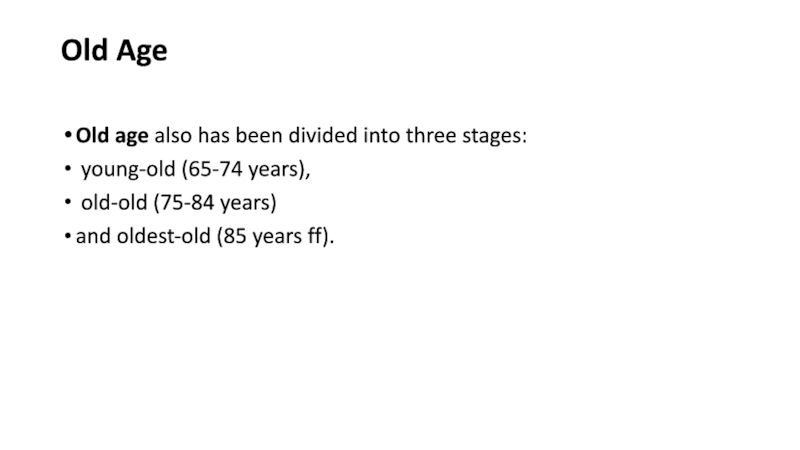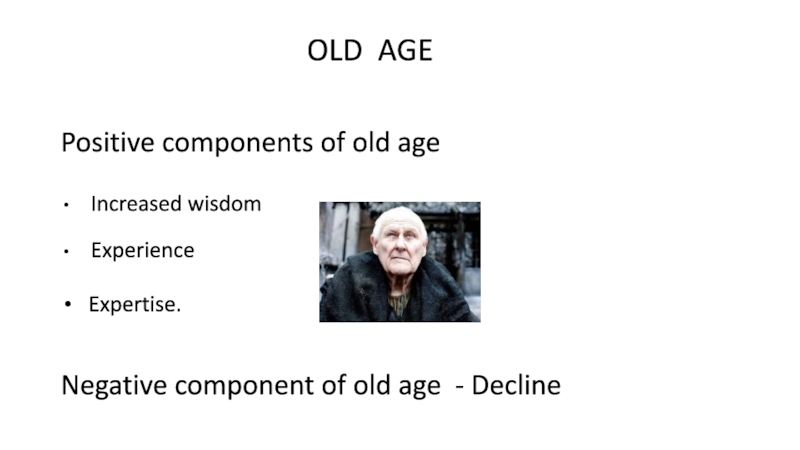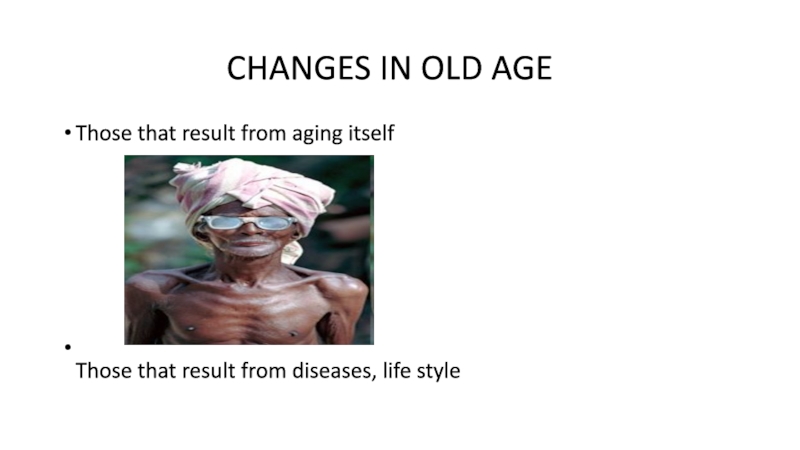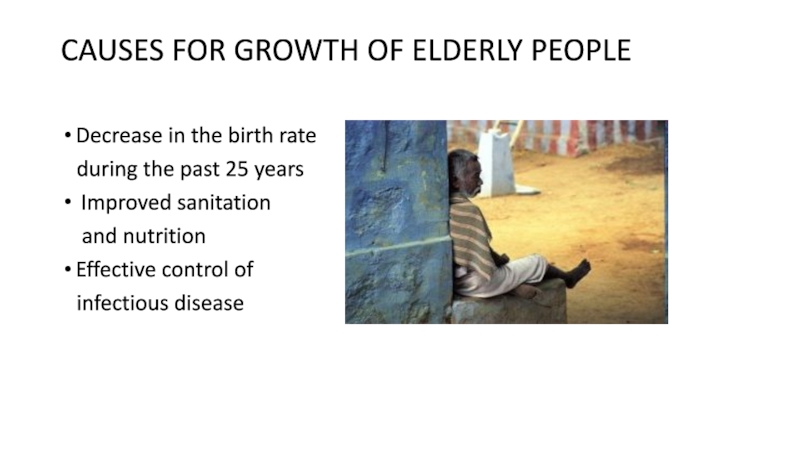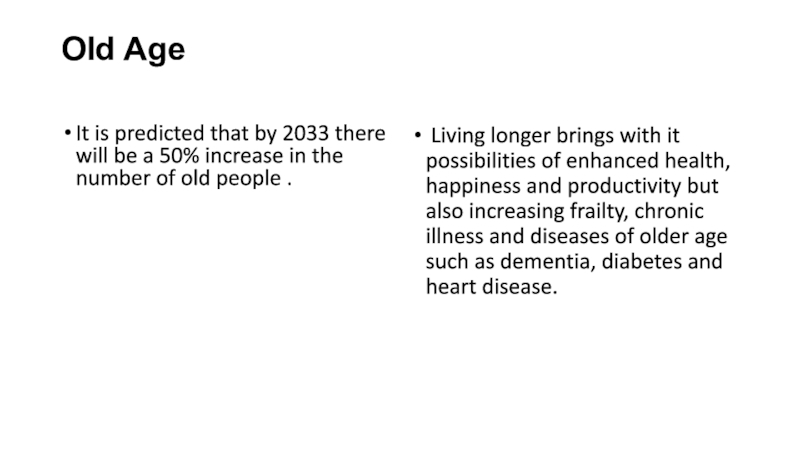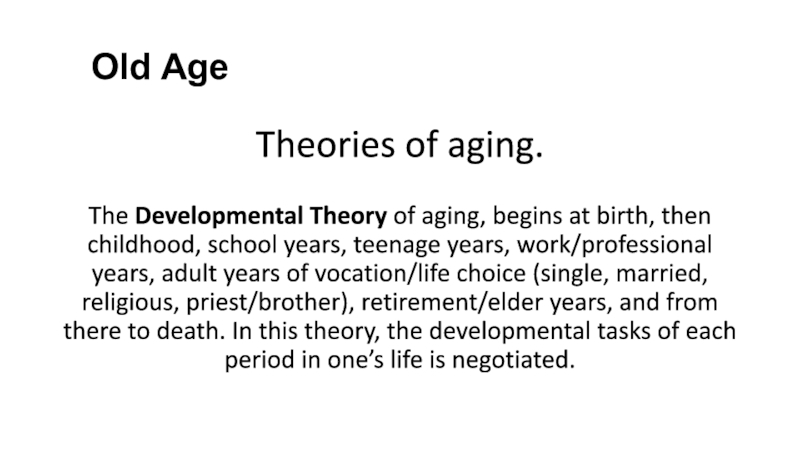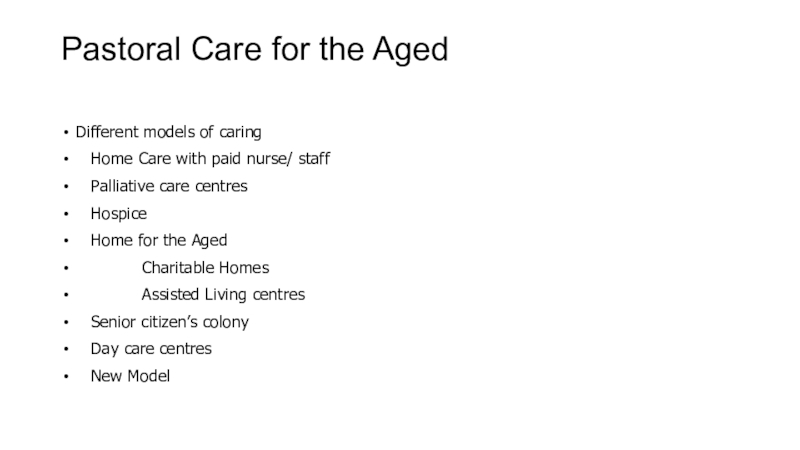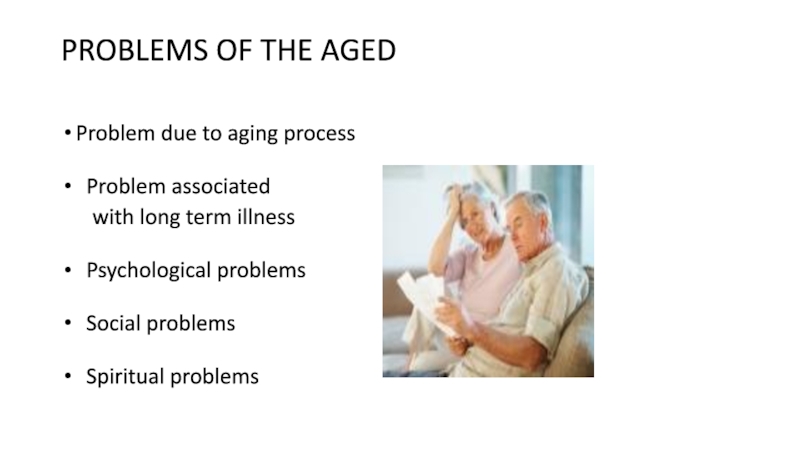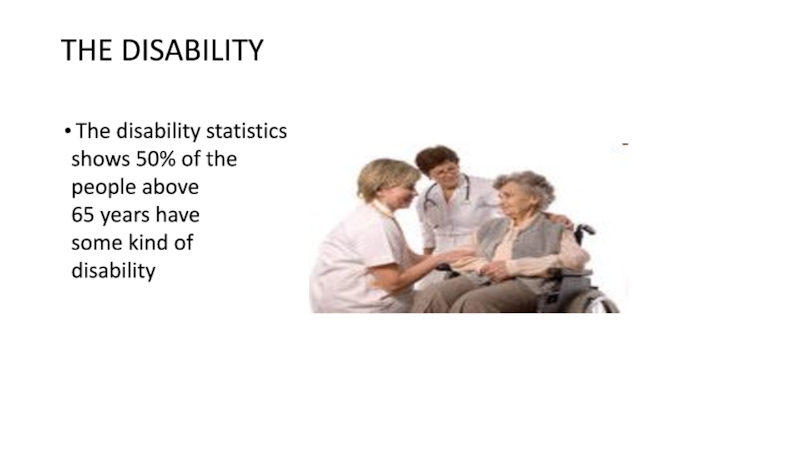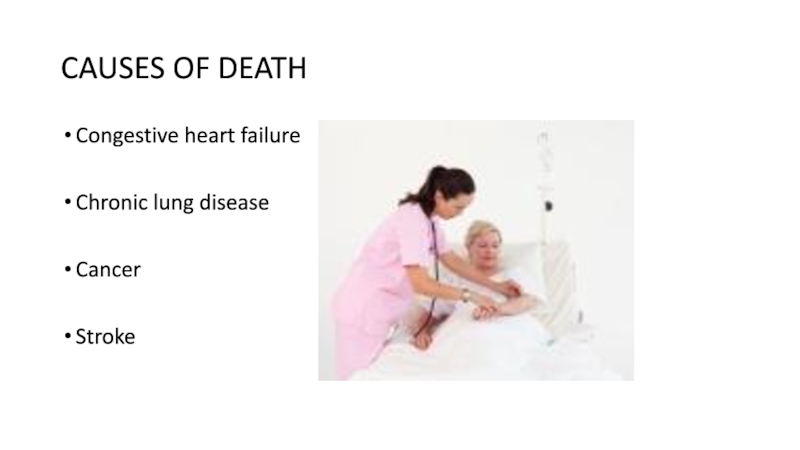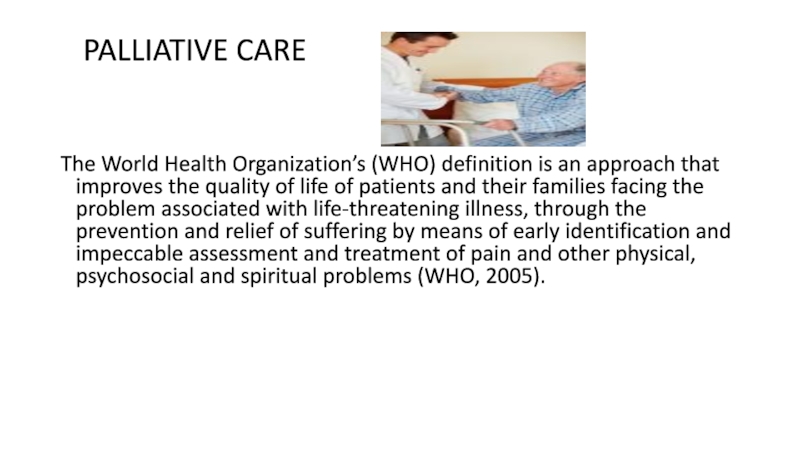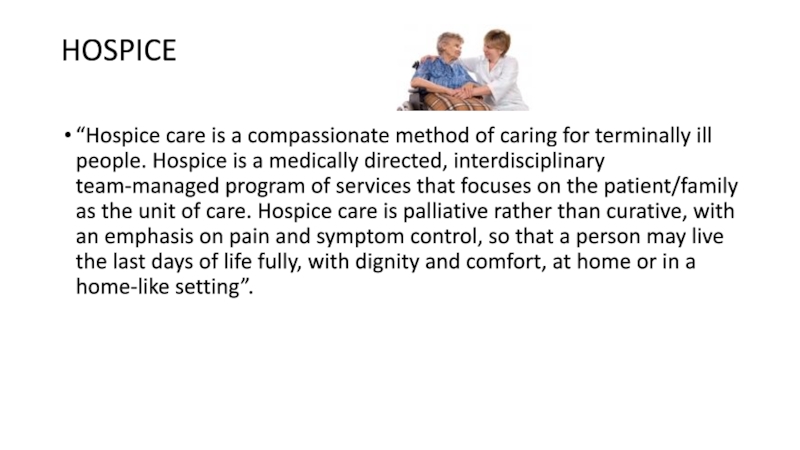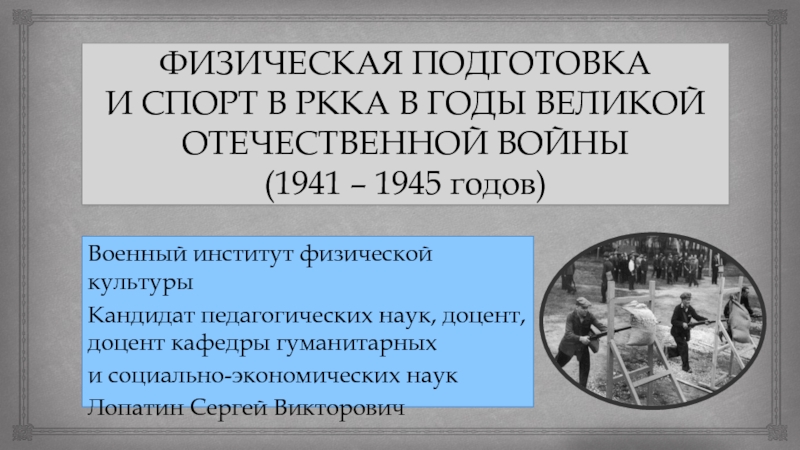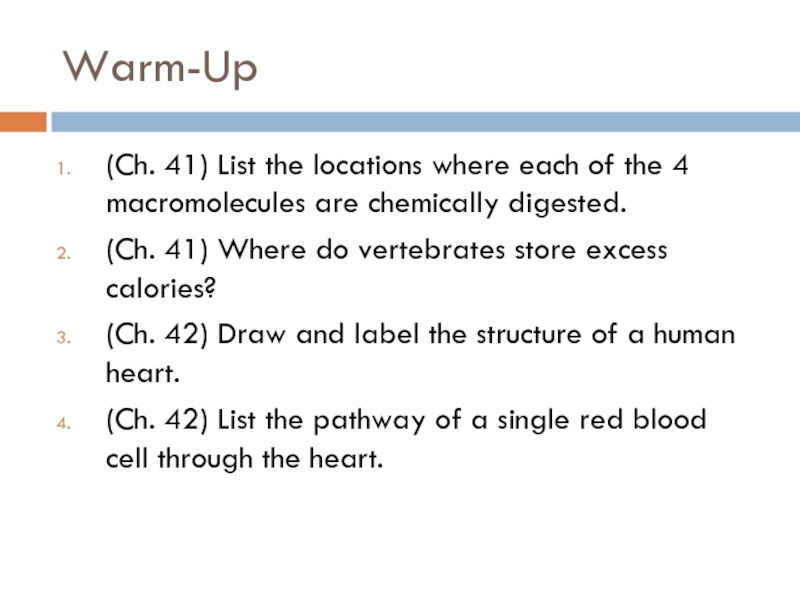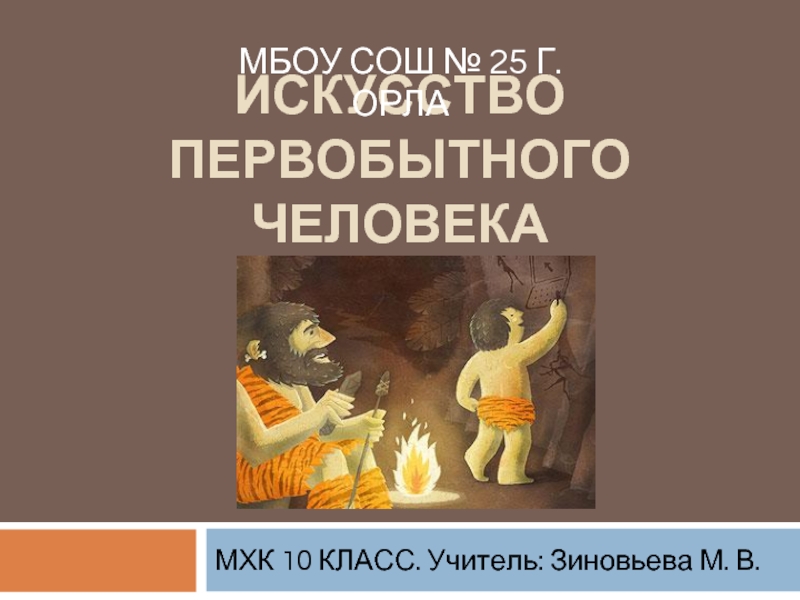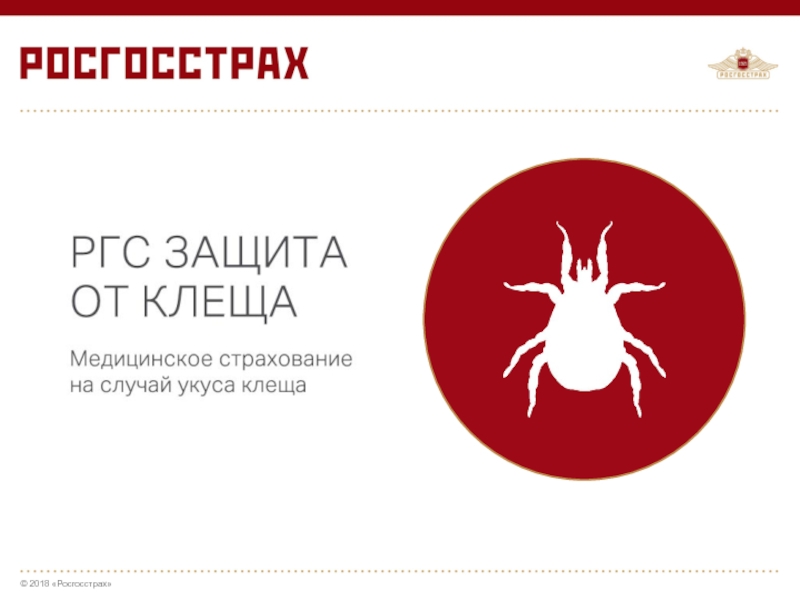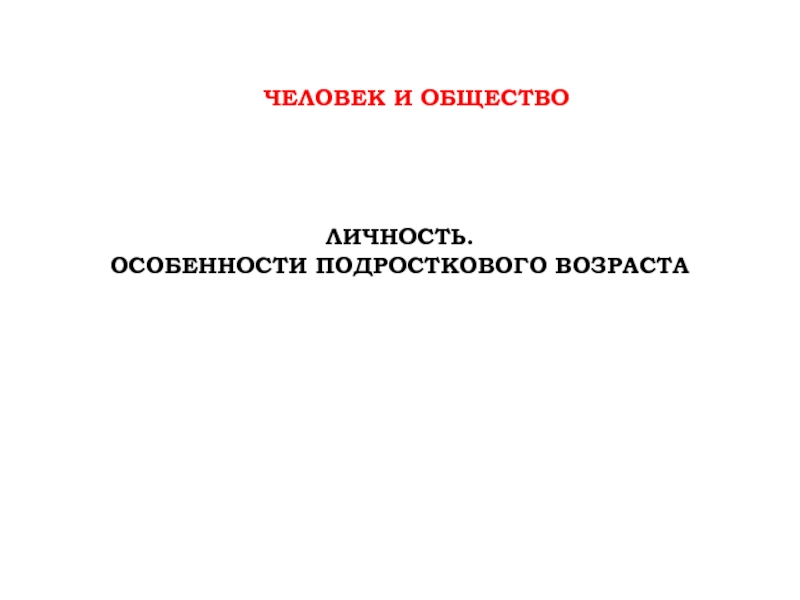Разделы презентаций
- Разное
- Английский язык
- Астрономия
- Алгебра
- Биология
- География
- Геометрия
- Детские презентации
- Информатика
- История
- Литература
- Математика
- Медицина
- Менеджмент
- Музыка
- МХК
- Немецкий язык
- ОБЖ
- Обществознание
- Окружающий мир
- Педагогика
- Русский язык
- Технология
- Физика
- Философия
- Химия
- Шаблоны, картинки для презентаций
- Экология
- Экономика
- Юриспруденция
OLD AGE
Содержание
- 1. OLD AGE
- 2. Old Age Old age also has been
- 3. Слайд 3
- 4. Слайд 4
- 5. CAUSES FOR GROWTH OF ELDERLY PEOPLE Decrease
- 6. Old Age It is predicted that by
- 7. Old AgeTheories of aging. The Developmental Theory
- 8. Pastoral Care for the Aged Different models
- 9. PROBLEMS OF THE AGED Problem due to
- 10. THE DISABILITY The disability statistics shows
- 11. CAUSES OF DEATHCongestive heart failureChronic lung disease
- 12. PALLIATIVE CARE The World Health
- 13. HOSPICE “Hospice care is a compassionate method
- 14. THANK YOU
- 15. Слайд 15
- 16. Скачать презентанцию
Old Age Old age also has been divided into three stages: young-old (65-74 years), old-old (75-84 years) and oldest-old (85 years ff).
Слайды и текст этой презентации
Слайд 3
OLD AGE
Positive components
of old ageIncreased wisdom
Experience
Expertise.
Negative component of old age - Decline
Слайд 4
CHANGES IN OLD AGE
Those that result from aging itself
Those that result from diseases, life styleСлайд 5CAUSES FOR GROWTH OF ELDERLY PEOPLE
Decrease in the birth rate
during the past 25 years
Improved sanitation
and nutritionEffective control of
infectious disease
Слайд 6Old Age
It is predicted that by 2033 there will be
a 50% increase in the number of old people .
Living longer brings with it possibilities of enhanced health, happiness and productivity but also increasing frailty, chronic illness and diseases of older age such as dementia, diabetes and heart disease.Слайд 7 Old Age
Theories of aging.
The Developmental Theory of aging, begins
at birth, then childhood, school years, teenage years, work/professional years,
adult years of vocation/life choice (single, married, religious, priest/brother), retirement/elder years, and from there to death. In this theory, the developmental tasks of each period in one’s life is negotiated.Слайд 8Pastoral Care for the Aged
Different models of caring
Home
Care with paid nurse/ staff
Palliative care centres
HospiceHome for the Aged
Charitable Homes
Assisted Living centres
Senior citizen’s colony
Day care centres
New Model
Слайд 9PROBLEMS OF THE AGED
Problem due to aging process
Problem associated
with long term illness
Psychological problems
Social
problems
Spiritual problems
Слайд 10THE DISABILITY
The disability statistics
shows 50% of the
people above
65 years have
some kind of
disability

